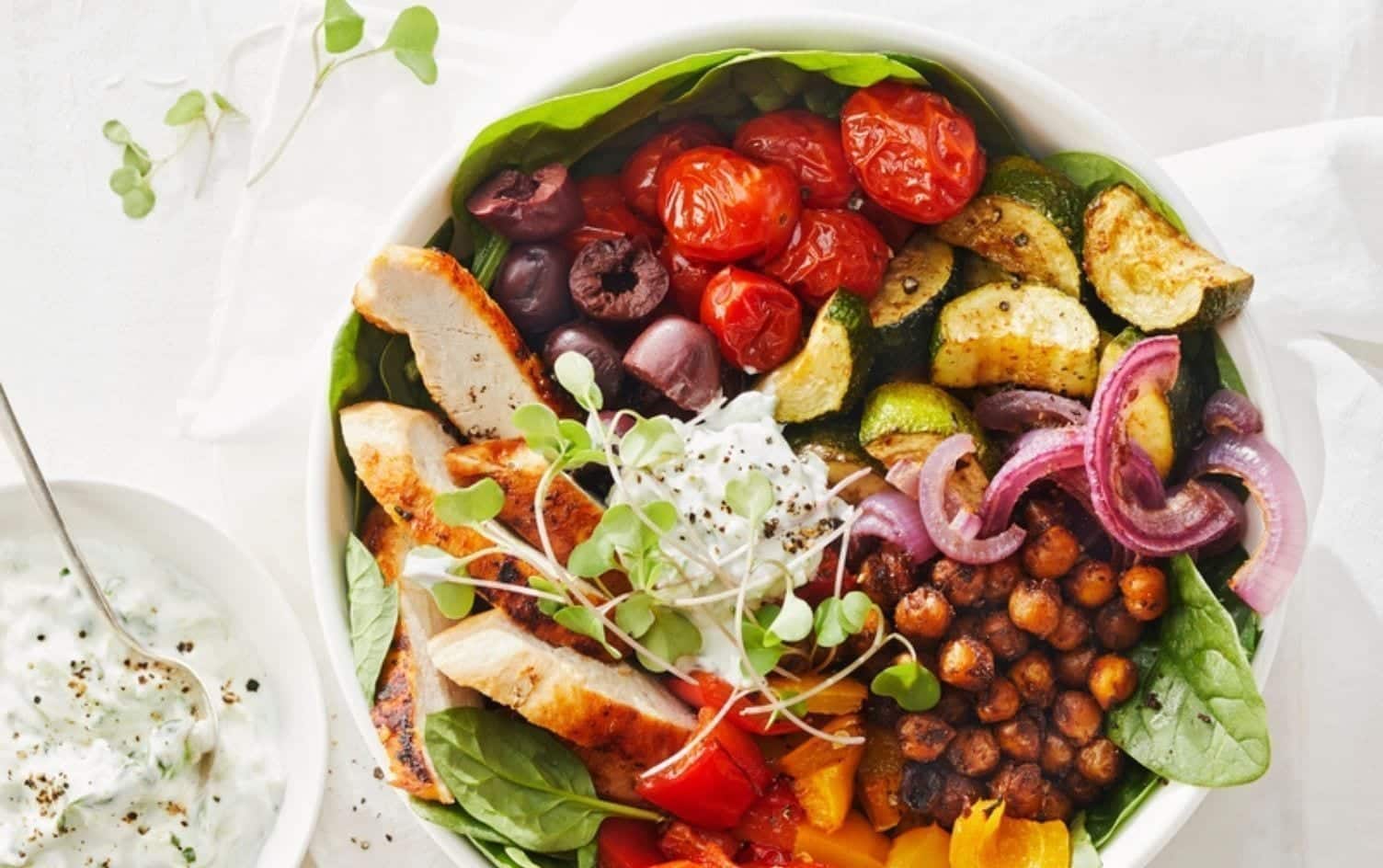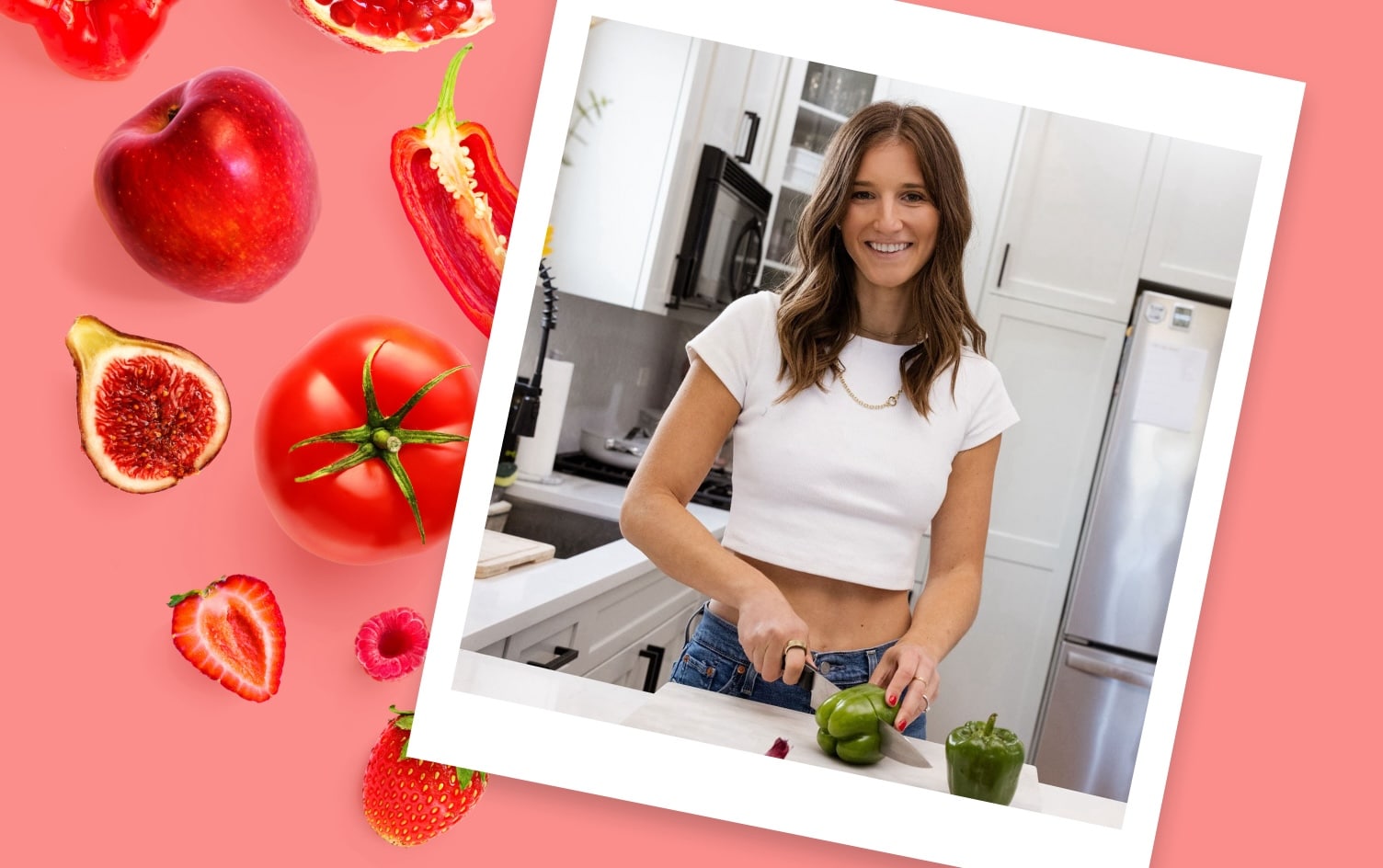If you’ve ever heard you should only eat fruit on an empty stomach or it’s a bad idea to eat two types of meat in the same meal, you’ve come across a concept called food combining. This set of rules around which foods can and can’t be paired together frequently makes the rounds on the internet, especially among people interested in weight loss.
WHAT IS FOOD COMBINING?
The idea of combining certain foods and avoiding other pairings stems from Ayurvedic medicine, an ancient holistic healing practice. “In Ayurveda, they categorize food by taste, energy (hot or cold) and effect on the digestive system,” explains Rachel Naar MS, RD.
Another proponent of specific food combining rules was Dr. William Hay, who created The Hay Diet in the 1920s, says Naar. This diet is based around the idea foods are alkaline, acidic or neutral and should be eaten in certain combinations to optimize the body’s pH balance and digestion. For example, foods like coffee, sodas, cheese and dairy are considered acidic; most fruits and veggies are alkaline, and neutral foods include natural fats and starches. This is similar to the alkaline diet, which has been debunked.
The contemporary version of food combining tends to draw inspiration from both of these sources. Followers of the food combining method stick to rules like:
- Only eat fruit on an empty stomach.
- Don’t eat starchy carbohydrates and protein together.
- Don’t eat starchy carbohydrates with acidic foods.
- Don’t combine different types of animal protein.
- Include non-starchy vegetables with every meal.
- Wait 3–4 hours after a meal before introducing another food group.
Advocates of these rules promise that not only will eating this way optimize your digestion, but it also helps you lose weight. “The premise is that weight gain may be caused by eating alkaline and acidic foods together, which results in an imbalance of digestive enzymes,” explains Leslie Bonci, MPH, RD.
DOES IT ACTUALLY WORK FOR WEIGHT LOSS?
When it comes to alkaline and acidic foods, one thing is clear: “We cannot significantly alter the pH of our body with what we eat,” says Bonci. In other words, there’s no evidence eating alkaline, acidic and neutral foods in certain combinations helps you lose weight or even improves your health.
“The rules from the diet are more derived from anecdotes than from science or evidence,” adds Bonci. “Our digestive tract is quite smart. When we eat protein, we secrete particular enzymes to help with digestion, and the same is true for carbohydrates and fat. So, the notion your body can’t handle more than one macronutrient at a time is false.”
In fact, one study published in the International Journal of Obesity found when calorie intake was equal, following a food combining plan didn’t result in greater weight loss than following a regular eating plan, says Bonci.
That said, because this way of eating is really about food exclusion and minimal calories, it’s possible to lose weight simply because you’re eating less due to the restrictive rules, notes Bonci. However, fad diets that create rules often backfire and lead to weight regain and yo-yo dieting, harming your metabolism and long-term goals.
Such diets often fail because they leave little room for flexibility. For example, “what happens when you want to go out with friends for a burger, which contains both carbs and protein?” asks Naar. Losing weight shouldn’t mean you have to stop living your life. Rather, it’s more successful if it fits your lifestyle and is enjoyable, sustainable and affordable, Bonci emphasizes.
FOOD PAIRINGS TO TRY (AND ONE TO AVOID)
As it turns out, there are some science-backed food pairings to emphasize and avoid in your diet for better health and, potentially, more effective weight loss.
ADD HEALTHY FATS
“In general, having a healthy fat at every meal will help you feel full for longer,” Naar says. This can be particularly helpful for people trying to lose weight. For example, adding a dressing with a little fat to a salad can help you feel satiated and prevent mindless eating later, or try an apple with nut butter for a filling snack.
CONSUME CALCIUM AND VITAMIN D
These two nutrients work together to help build and maintain bones. “Even if you’re eating enough calcium, it could be going to waste if you’re not consuming enough vitamin D,” Naar says. You don’t necessarily need to eat these two in the same meal, but it’s a good idea to ensure you’re getting enough of both each day (which you can track with an app like MyFitnessPal). “Foods high in calcium include leafy greens, dairy products and fish with bones. Foods with vitamin D include fish, egg yolks and mushrooms,” says Naar.
READ MORE > 9 MOOD-BOOSTING FOOD PAIRINGS TO LIFT YOUR SPIRITS
COMBINE HEALTHY OILS WITH COLORFUL VEGGIES
To increase phytonutrient absorption, Bonci recommends eating colorful veggies (especially deep green, red or orange ones) with healthy cooking oils like olive oil. Try making a big batch of roasted veggies, meal-worthy salads or stir-fries.
PAIR CARBS AND PROTEIN
You can do this at any meal, but it’s especially important post-workout. “This combination can help speed up muscle recovery and lessen the stress response that happens after you work out,” explains Naar. “Think: banana and peanut butter or yogurt with berries.” This may also help people with diabetes since it may help slow glucose absorption in the blood.
MIX VITAMIN C-RICH FOODS AND PLANT-BASED SOURCES OF IRON
Vitamin C helps increase non-heme iron absorption (the kind found in plant foods), a common deficiency, especially in women, Naar says. For instance, you could eat oranges (vitamin C) and green leafy vegetables (iron) in the same meal.
MIX COLORS, TEXTURES, TEMPERATURES AND TASTES
”For successful weight loss, the eating experience should be palatable and pleasurable,” Bonci says. Hitting several different components in a meal can increase satiety between meals and prevent mindless eating.
DON’T DRINK ALCOHOL ON AN EMPTY STOMACH
When you drink alcohol on an empty stomach, “it’s digested quickly by the stomach and small intestine,” says Naar, which can lead you to feel the effects of alcohol way more intensely. This can lead to poor decisions about food and weight gain over time. “When there’s food in your stomach, alcohol takes a bit longer to digest and process.” In particular, she recommends eating protein or fat before or while you’re drinking.
Unlock an experience that’s like having a dietitian, trainer and coach — right at your fingertips. Go Premium for expert guidance and exclusive tools that will help you reach your personal health goals.




